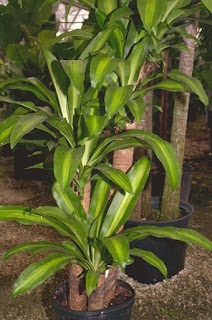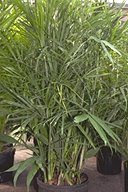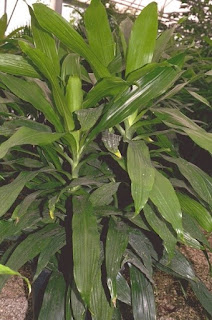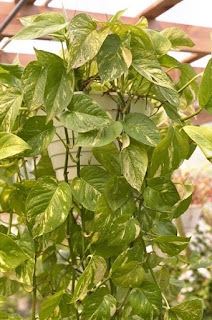As summer fast approaches, these recommended plants will
repel mosquitoes in your landscape and how to use these plants to enjoy the
outdoors during summer. In addition to the plants that repel mosquitoes, there
are eco-friendly ways to keep mosquitoes from your outdoor living spaces.
Some areas of the southeast have had drought-busting
rainstorms and even with the tremendous amounts of rainfall, these areas are
still considered to be under drought conditions. With the severe amounts of rainfall that
comes into an area, and the warmer temperatures of the season that is a sure
sign the annoying mosquito is not far behind.
The plants that I am suggesting will repel mosquitoes from
your outdoor living space. There are a few suggestions when planning to use the
plants mentioned to enhance the natural repelling abilities:
v Use
the plants in containers around your patio, deck, or outdoor living space such
as patio tables and chairs.
v Use
the plants in containers or planted in the ground by your front door and your
back door.
v Lemon
Grass is the #1 recommended plant to grow in the landscape and in containers to
use around your patio, deck, or outdoor living spaces to repel mosquitoes
during the summer.
v Before
having outdoor activities brush the Lemon Grass to release more of its
fragrance.
v Lemon
Grass is used in cooking.
Here are a few suggestions recommended to do in addition
to using the recommended plants:
v Fix
all outdoor facets that drip.
v Drain
your birdbath twice a week and refill your birdbath. Another suggestion is to
add one 1-inch chlorine pool tab to your birdbath once a month.
v Turn
your empty outside pots and containers upside down to prevent the containers
from collecting water.
v Drain
your plant saucers that collect water once a week, mosquitos lay their eggs in
stagnant water.
v To
reduce numerous other flying insects, including mosquitoes, plant marigolds in
containers or in the landscape.
There are additional benefits to adding mosquito-repelling
plants to your landscape. A few of the benefits are that the mixture of plants
listed can be used in addition to repelling mosquitoes, but also used as herbs
in cooking, the trees listed will attract additional wildlife such as birds to
the garden to give natural predators of mosquitoes a safe heaven, the majority
of the plants are nectar and larval food plants for butterflies in your area,
and the Silver Dollar Tree can be used in your fresh cut flower arrangements as
greens.
Ageratum, Floss Flower - Ageratum houstonianum. Type: Annual. Zones:
All. Height: 6-12”. Spacing:
6-8” apart. Light: Full sun to partial shade. Uses:
Butterfly nectar plant, bedding, edging, or in containers. (Ageratum pictured left.)
American Beautyberry –
Callicarpa americana. Type: Shrub. Zones: 6-10. Height: 3-6 feet. Spacing: 3-6 feet apart.
Light: Full sun to partial shade. Uses: Attracts birds, mass plantings,
woodland gardens, butterfly nectar plant. (American Beautyberry pictured below right.)
Basil Lemon, Mrs. Burns' Lemon Basil - Ocimum
basilicum citriodora. Type: Annual. Zones: All. Height: 2 feet. Spacing:
18 – 24 inches apart. Light: Full sun to partial shade. The best tasting lemon
basil, with a sweet, tangy flavor. Very bright green, 2 1/2" long leaves
with white blooms make this basil both attractive and intensely flavorful. Uses:
Butterfly nectar plant, leaves used in cooking, especially good on chicken and
fish dishes.
Basil
Lemon, Sweet Dani Lemon - Ocimum
basilicum. Type: Annual. Zones: All. Height: 26 – 36 inches. Spacing: 18
– 24 inches apart. Light: Full sun to partial shade. Tall, upright plant with
high yields. 3 inch long, light olive-green leaves. The high citral content
(68%) in the essential oil results in a sweetly pungent lemon flavor and scent.
Uses: Butterfly nectar plant, leaves used in cooking.
Basil - Ocimum
basilicum. Type: Annual. Zones: All. Height: 2 feet. Spacing: 18-24”
apart. Light: Full
sun to partial shade. Uses: Butterfly nectar plant, leaves
used in cooking. (Basil pictured left.)

Cadaga Tree - Eucalyptus torelliana. Type: Tree. Zones:
10-12. Height: To 80 feet. Spacing: 20-30 feet apart. Light: Full sun. Uses: Attracts
wildlife to the garden. (Cadaga Tree pictured right.)
Catmint - Nepeta
faassenii. Type: Perennial. Zones: 3-10.
Height: 2-3 feet. Spacing:
12-18 “apart. Light: Full sun to partial shade. Uses: Butterfly and hummingbird
nectar plant and your cats will love it. (Catmint is pictured left.)
Catmint
- Nepeta mussinii. Type: Perennial. Zones:
3-10. Height: 12 – 18 inches. Spacing: 12 inches apart. Light: Full sun to
partial shade. Profuse lavender blooms on spiky stems. Good
for containers and the perennial garden. Soft, crinkled, gray-green leaves on a
compact, mounding plant. Uses: Butterfly nectar plant, ground cover, and cats
will love it.
 Catnip - Nepeta
cataria. Type: Perennial. Zones: 3-10. Height: 2-3 feet.
Spacing: 12-18 “apart. Requirements:
Full sun to partial shade. Vigorous, high-yielding plants. Cat-attracting perennial with gray-green leaves and white
flowers. Uses: Butterfly nectar plant and cats will love it. (Catnip is pictured right.)
Catnip - Nepeta
cataria. Type: Perennial. Zones: 3-10. Height: 2-3 feet.
Spacing: 12-18 “apart. Requirements:
Full sun to partial shade. Vigorous, high-yielding plants. Cat-attracting perennial with gray-green leaves and white
flowers. Uses: Butterfly nectar plant and cats will love it. (Catnip is pictured right.)
Citronella Geranium,
Mosquito Plant – Pelargonium ‘citrosum’. Type: Perennial. Zones: 9-10, treat as an
annual outside zone 9. Height: 2-3 feet. Spacing: 6-12 inches apart. Light:
Full sun to partial shade. Uses: Containers, herb garden, cottage garden, and
bedding.
Citronella Grass - Cymbopogon nardus. Type: Perennial in
USDA Zones 9 and 10, annual outside zone 9. Height: 5-6 feet. Spacing: 3-5 feet
apart. Light: Full sun to partial shade. Uses: The oil from the plant is used
in citronella candles. Plant along walkways and in containers to use around
outdoor living areas.
Clove Tree - Syzygium
aromaticum. Type: Tree. Zones: 9-10.
Height: 20-30 feet.
Spacing: 25 feet apart. Light: Full sun to partial shade. Uses: The flower buds
are the spice of commerce, and attract wildlife to the garden. (Clove Tree is pictured left.)
Garlic
– Allium sativum. Type:
Bulb. Zones: 3-9. Height: 3 feet. Spacing: 4-6 inches apart. Light: Full sun. Uses:
The cloves are used in flavoring numerous culinary dishes and breads. Garlic
has several medicinal properties check with your health care professional
before starting.
Horsemint or Lemon Beebalm - Monarda citriodora.
Type: Perennial. Zones: 4-10. Height: 12-30
inches. Spacing: 12-24 inches apart. Light: Full sun to partial shade. Uses:
The flowers can be used in fresh cut arrangements, nectar plant for butterflies
and hummingbirds.
Lavender - Lavandula
angustifolia ‘‘Lady’. Type: Perennial. Zones:
5-10. Height: 24 – 30 inches. Spacing: 12-18 inches apart. Light: Full sun.
Blooms heavily the first year. Lady sets the standard for earliness and uniform, dark violet
bloom color. Blooming begins 10-12 weeks after planting. Uses:
Nectar plant for butterflies, use dried flowers in potpourris and sachets.
Lemon Balm - Melissa
officinalis ‘Quedlinburger niederliegende’. Type:
Perennial. Zones: 4-10. Height: 2-3 feet. Spacing: 12-18 inches apart. Light:
Full sun to partial shade. Improved Lemon Balm with high essential oil content.
All leaves have a distinct lemon flavor. Uses: Leaves used in potpourris,
flavor hot and iced teas, and used as a substitute for lemon peel in cooking. Toss
three stems on the barbeque to deter flying insects. Attracts Butterflies and
Hummingbirds to the garden.
Lemon Balm - Melissa
officinalis. Type: Perennial. Zones: 4-10. Height: 2-3 feet.
Spacing: 12-18 inches apart. Light: Full sun to partial shade. Uses: Leaves
used in potpourris, flavor hot and iced teas, and as a substitute for lemon
peel in cooking. Toss three stems on the barbeque to deter flying insects. Attracts
Butterflies and Hummingbirds to the garden.
 Lemon Grass - Cymbopogon citrates. Type: Perennial. Zones
8-11, treat as an annual outside zone 8. Height: 4-6 feet. Spacing: 3-5 feet apart. Light: Full sun to partial shade. Uses: The leaves are used in cooking,
herb garden, beds or borders, and containers. (Lemon Grass is pictured right.)
Lemon Grass - Cymbopogon citrates. Type: Perennial. Zones
8-11, treat as an annual outside zone 8. Height: 4-6 feet. Spacing: 3-5 feet apart. Light: Full sun to partial shade. Uses: The leaves are used in cooking,
herb garden, beds or borders, and containers. (Lemon Grass is pictured right.)
Lemon Scented Geranium - Pelargonium crispum. Type: Perennial. Zones:
9-10, treated as an annual outside zone 9. Height: 2-3 feet. Spacing: 12 inches
apart. Light: Full sun to partial shade. Uses: Nectar plant for butterflies,
leaves used in cooking, in potpourris, sachets, and containers.
Lemon Verbena - Aloysia triphylla. Type: Perennial. Zones
8-11, treat as an annual elsewhere. Height: To 4 feet. Spacing: 18-24 inches
apart. Light: Full sun to partial shade. Uses: The oil is used in perfumes; the
leaves are used in flavoring teas and jellies.
Mexican Marigold Mint - Tagetes lucida. Type: Perennial.
Zones:
8-11. Height: 24-30 inches. Spacing: 12-18 inches apart. Light: Full sun to
partial shade. Uses: Butterfly nectar and larval food plant, fresh flowers used
in salads, leaves are used as a substitute for French tarragon. (Mexican Marigold Mint is pictured left.)
 Mindanao Gum Tree - Eucalyptus deglupta. Type: Tree. Zones:
10-11. Height: To 225 feet. Spacing: 30 feet apart. Light: Full sun to partial
shade. Uses: Attracts wildlife to the garden, fragrant leaves and colorful bark. (Mindanao Gum Tree pictured right.)
Mindanao Gum Tree - Eucalyptus deglupta. Type: Tree. Zones:
10-11. Height: To 225 feet. Spacing: 30 feet apart. Light: Full sun to partial
shade. Uses: Attracts wildlife to the garden, fragrant leaves and colorful bark. (Mindanao Gum Tree pictured right.)
Mugwort – Artemisia
vulgaris. Type:
Perennial. Zones: 4-11. Height: 3-4 feet. Spacing: 12-24 inches apart. Light:
Full sun. Uses: Nectar and larval food plant for butterflies,
drought tolerant plant.
Neem Tree – Azadirachta
indica. Type:
Tree. Zones: 9-11. Height: 50-65 feet. Spacing: 25-30 feet apart. Light: Full
sun. Uses: Shade tree.
Pennyroyal - Mentha
pulegium. Type: Perennial. Zones: 6-11. Height: 6-12 inches.
Spacing: 12 inches apart. Light: Full sun to partial shade. Uses: A
groundcover, nectar plant for butterflies, leaves used in the flavoring for
fish dishes.
Peppermint - Mentha
piperita. Type: Perennial. Zones: 6-10. Height: 24-36
inches. Spacing: 12-18 inches apart. Light: Full sun to partial shade. Uses:
Leaves are used fresh in hot and iced teas, butterfly nectar, and larval food
plant.
Pitcher Plant - Nepenthes alata. Type: Herbaceous
perennial.
Zones: 10-11. Height: To 14 feet, usually grown in a hanging basket.
Spacing: N/A. Light: Partial shade to shade. Uses: Will attract and capture all
types of pesky insects from your garden. The plant is available at local garden
centers in hanging baskets and can be placed in tree limbs or placed on patio
plant stands. The plant uses the insects it captures as fertilizer. (Pitcher Plant pictured right).
 Prostrate Rosemary - Rosmarinus officinalis 'Prostrates'.
Type: Perennial shrub or groundcover. Height: 12-18”. Spacing: 2 feet apart.
Light Requirements: Full sun to partial shade. Additional Uses: The leaves are
used in lamb and fish dishes, butterfly nectar plant, drought tolerant plant. (Prostrate Rosemary pictured above left).
Prostrate Rosemary - Rosmarinus officinalis 'Prostrates'.
Type: Perennial shrub or groundcover. Height: 12-18”. Spacing: 2 feet apart.
Light Requirements: Full sun to partial shade. Additional Uses: The leaves are
used in lamb and fish dishes, butterfly nectar plant, drought tolerant plant. (Prostrate Rosemary pictured above left).
Red-Flowering Gum Tree - Eucalyptus ficifolia. Type: Tree.
Zones: 8-10.
Height: 25-30 feet. Spacing: 20-25 feet apart. Light: Full sun. Uses: After
establishment in the landscape the tree is very drought tolerant, the leaves
are fragrant, attracts wildlife to the garden, very showy red flowers in spring
and summer. (Red-Flowering Gum Tree pictured above right).
Roman Wormwood - Artemisia pontica. Type: Perennial. Zones:
2-10. Height: 18-24”. Spacing: 12” apart. Light: Full sun. Uses: Nectar and
larval food plant for butterflies, drought tolerant plant, ground cover, beds,
and containers.
Rosemary - Rosmarinus
officinalis. Type: Perennial shrub.
Zones: 6-10. Height: 4
feet. Spacing: 3-5 feet apart. Light: Full sun to partial shade. Uses: The
leaves are used in lamb and fish dishes, drought tolerant plant, butterfly
nectar plant, and containers. Cut stems 6-12 inches long when firing up the barbeque
and place on the grill. The scent will deter the mosquitoes away and the flavor
of rosemary will be absorbed into the meats you are cooking on the grill. (Rosemary pictured left.)
Sagebrush – Artemisia tridentate.
Type:
Shrub. Zones: 4-9. Height: 2-8 feet. Spacing: 3-5 feet apart. Light: Full sun.
Uses: Drought tolerant shrub.
Silver Dollar Tree - Eucalyptus cinerea. Type: Tree.
Zones:
8-11. Height: To 20 feet. Spacing: 25 feet apart. Light: Full sun. Uses:
Attracts wildlife to the garden, the foliage is used in fresh cut flower
arrangements as greens, and dried floral arrangements. (Silver Dollar Tree pictured right.)
Silver
Drop Eucalyptus, Cider Gum Eucalyptus, Cidergum Eucalyptus - Eucalyptus gunnii ‘Silver Drop’. Type: Tree or shrub. Zones:
8-11. Height: 24 – 36 feet. Spacing: 25 feet apart. Light: Full sun to partial
shade. Blooms: Summer through fall, white flowers. Drought tolerant. Small, silver-green leaves that are used in
fresh or dried bouquets. Easily preserved with glycerin. Uses: Butterfly larval
plant, grows well in containers, accent in beds.
Tansy - Tanacetum
vulgare. Type: Perennial. Zones: 3-10.
Height: 3-4 feet.
Spacing: 12-18” apart. Light: Full sun to partial shade. Uses: Nectar food
plant for butterflies. (Tansy pictured left.)
Tea Tree – Melaleuca alternifolia.
Type:
Tree. Zones: 9-11. Height: 20 feet. Spacing: 20-25 feet apart. Light: Full sun.
Uses: Flowering tree for formal or informal landscapes.
Vanilla Leaf – Achlys
triphylla. Type:
Ground cover. Zones: 7-9. Height: 12-18 inches. Spaing: 3-5 feet apart. Light:
Partial shade to shade. Uses: Ground cover for shady areas, fragrant vanilla
scented leaves.
Vetiver Grass – Vetiveria
zizanioides. Type:
Perennial grass. Zones: 8-10. Height: 4-5 feet. Spacing: 2-4 feet apart. Light:
Full sun to partial shade. Uses: Erosion control.
Wormwood - Artemisia
absinthium. Type: Perennial. Zones: 4-9. Height: 2-3 feet.
Spacing: 18-24 inches apart. Light: Full sun to partial shade. Uses: Nectar and
larval food plant for butterflies, drought tolerant plant.
Wormwood - Artemisia
'Powis Castle'. Type: Perennial. Zones: 4-9. Height:
2-3 feet. Spacing: 3 feet apart. Light: Full sun to partial shade. Uses: Nectar
and larval food plant for butterflies, drought tolerant plant.

































